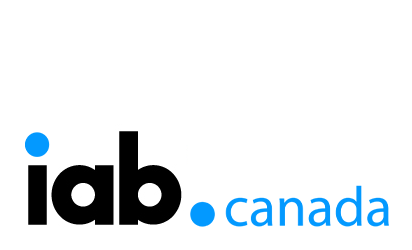Construct a Winning
Optimization Strategy
5 Considerations for
Delivering Omnichannel Success
By Manu Ferrerio, VP Integrated Solutions, EMEA
& Marcella Barras, Sr. Product Marketing Manager at Clinch
December 19th, 2023
In the realm of digital advertising, the concept of dynamic creative optimization (DCO) is commonly associated with tailoring content to specific audiences. However, relying solely on serving dynamic creative variations provides only partial benefits. The true potential lies in the optimization of these creative variations, offering advertisers a deep understanding of what works and what doesn’t in their campaigns.
Moving beyond the basics, advertisers need to recognize that applying insights gleaned from optimizations across all channels is crucial for extracting the most value from their strategies. But what exactly do we mean by ‘optimization’? This term encompasses various ad tech practices such as media channel, search engine, conversion rate, and dynamic creative. Despite their differences, they all share a common goal: maximizing efficiency and effectiveness in ad campaigns.
As advertisers increasingly leverage DCO to reach omnichannel audiences, unifying workflows becomes key to maximizing efficiency levels and rapidly personalizing and optimizing ads at scale. A recent poll conducted by Clinch and Digiday titled “The State of Dynamic Advertising” highlighted that 28% of respondents identified “Multichannel/cross-channel integration” as a pivotal factor in their DCO efforts.
Adopting a multi-channel approach is not merely a trend but a necessity for advertisers navigating the complexities of the modern customer’s journey. With the continued popularity of ad-supported Audio, Connected TV (CTV)/OTT programming, and Digital Out of Home (DOOH), the need for well-rounded optimization strategies becomes even more apparent.
In light of these realities, we’ve explored the intricacies of Display and Video DCO, providing five key considerations for constructing a successful optimization strategy.
Audience segmentation + DCO Yields Valuable Insights:
Combining audience segmentation with DCO reveals valuable audience, creative, and product strategy insights. By publishing audience data sets to Flight Control’s Audience Library, advertisers can test creative ad templates or products by performance for each individual audience, rather than across all audiences together. This approach provides granular insights about audience preferences for creative variations and products, which can be implemented in future cross-channel campaigns.
Deploy Cost-Effective Audience Reach:
Combining audience segmentation and DCO allows advertisers to reach a larger audience cost-effectively. By implementing a targeting strategy to audience sub-segments at the ad server side, advertisers can maintain broader audience targeting on the publisher/media partner side, maximizing reach and maintaining CPM efficiency. For example, within a brand’s established audience (tech-savvy), Clinch’s DCO strategy would target users based on geo-targeting to display the nearest store where the items are in stock, optimizing creative variations based on desired KPIs.
Define Success and Reverse Engineer:
Relentlessly asking what success looks like and applying reverse engineering is essential for designing a detailed optimization strategy. Establishing optimization KPIs and secondary KPIs defines experiment goals and success criteria. Advertisers should consider the number of variables at play and set appropriate thresholds, such as red lines (minimum criteria to be reached) and general timing (duration of the experiment), based on historical data.
Advanced Parameters for Fine-Tuning:
Implementing advanced parameters is pivotal for fine-tuning the type of learnings advertisers can gain from their DCO strategies. Flight Control’s optimization solution offers advanced parameters such as serving coefficients (flexible values determining emphasis on one strategy over another) and customizable condition sets and minimum thresholds. These parameters enable advertisers to tailor their optimization approach, providing a nuanced understanding of campaign performance and identifying underperforming creative variations for timely adjustments.
Take a Full-Funnel DCO Approach:
Implementing a full-funnel DCO approach is essential for granular learnings. DCO strategies should not be one-size-fits-all and should vary across the marketing funnel. Lower-funnel strategies (evaluation stage) demand lower impression thresholds, narrower testing parameters, and a more targeted aggressiveness, while upper-funnel strategies (awareness stage) require higher impression thresholds, broader testing parameters, and a weighted aggressiveness. This diversification ensures a comprehensive understanding of campaign performance across the entire funnel.
In summary, while the world of dynamic creative optimization (DCO) may seem complex, it ultimately offers advertisers an invaluable tool for refining their digital campaigns. As we delve into this landscape, it’s important to adopt a mindset that perceives optimization not as a flawless success but rather as a dynamic process prone to experimentation and learning. Personally, we view optimization from a unique perspective—one that sees it as a crucial step in the path to success. It’s a process where failures are not setbacks but rather opportunities to swiftly identify what doesn’t work. Embracing the concept of “failing well,” we aim to recognize mistakes as a natural part of the evolutionary process. The ability to pinpoint inefficiencies early on allows for strategic adjustments, channeling impressions away from underperforming versions to those that meet or exceed minimum standards. This rapid adaptation, especially when automated with tools like Clinch, contributes to an enhanced and more efficient experimental framework. In the words of Ray Dalyo, let’s recognize that mistakes are an inherent aspect of evolution and strive to “fail well.”



